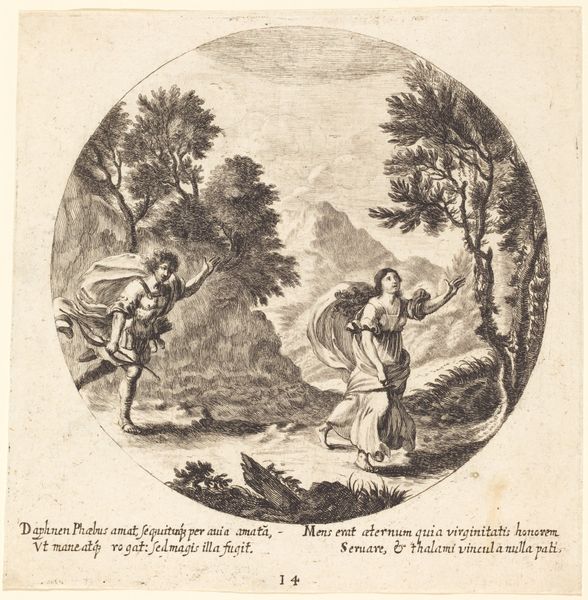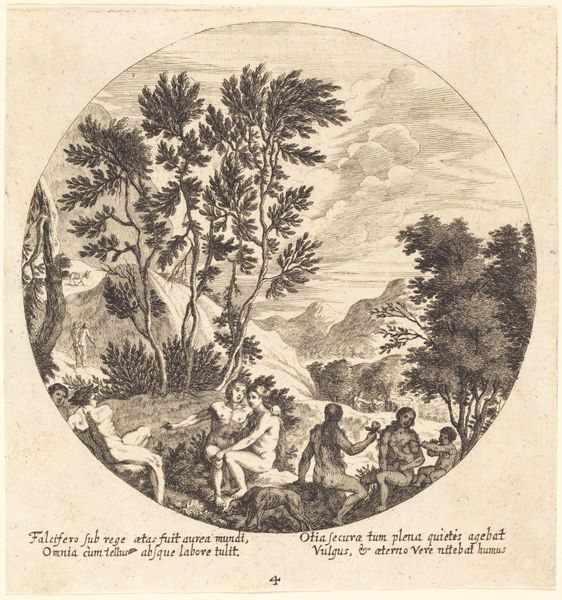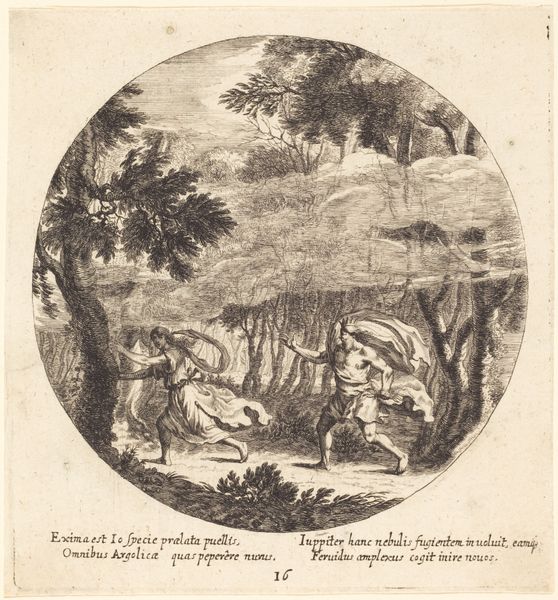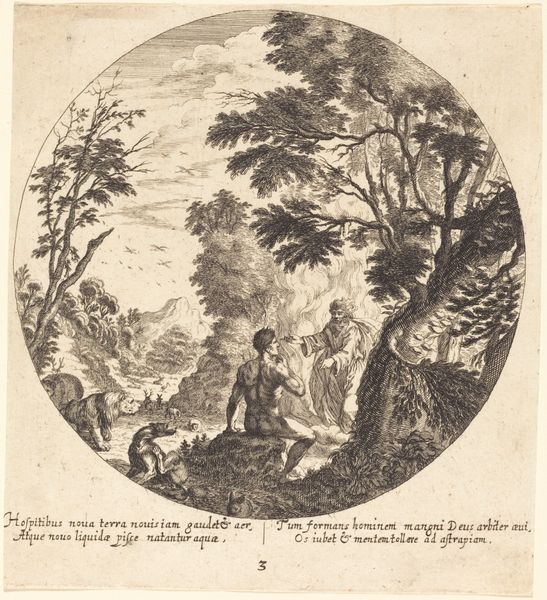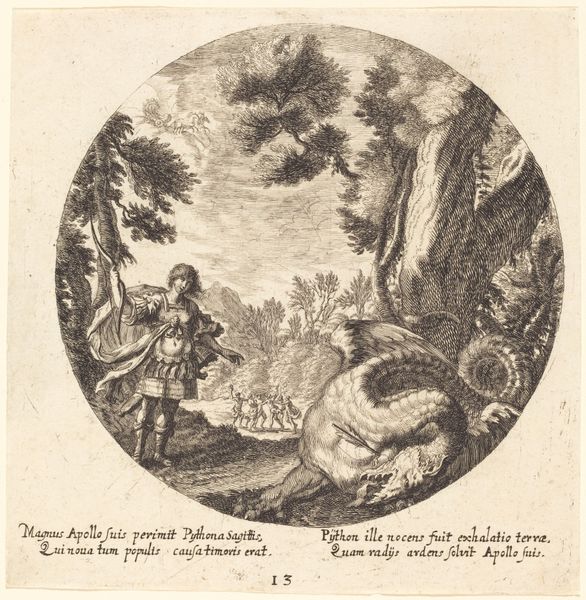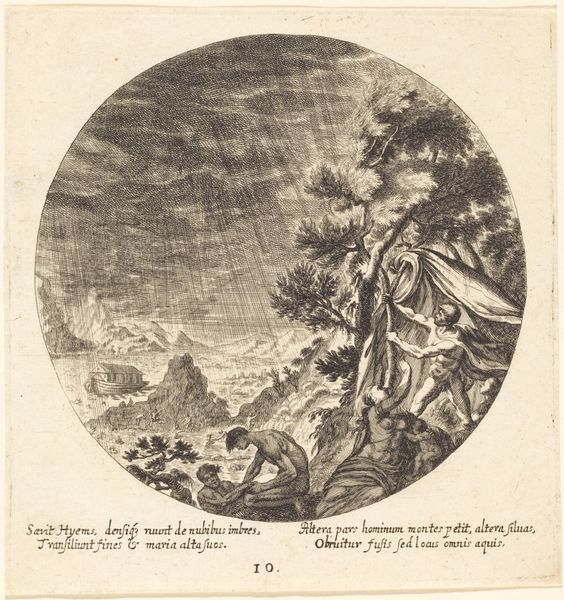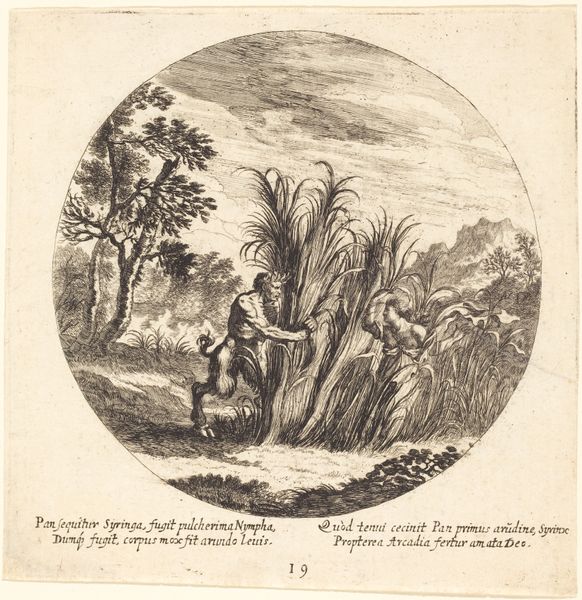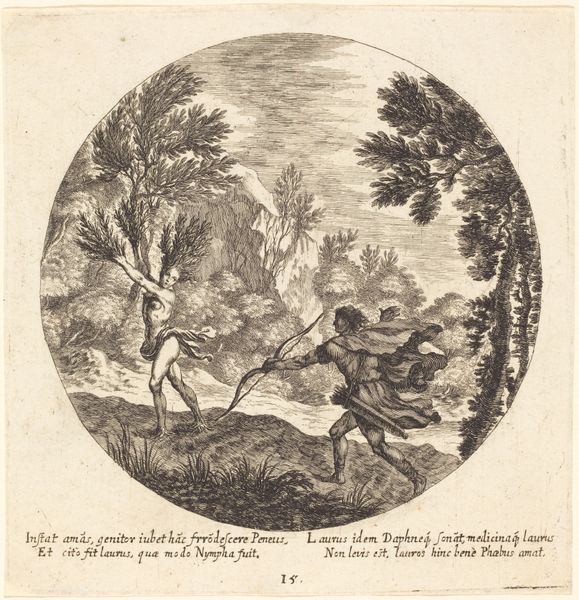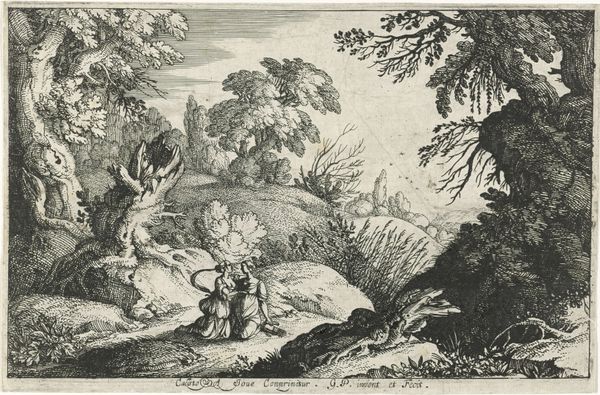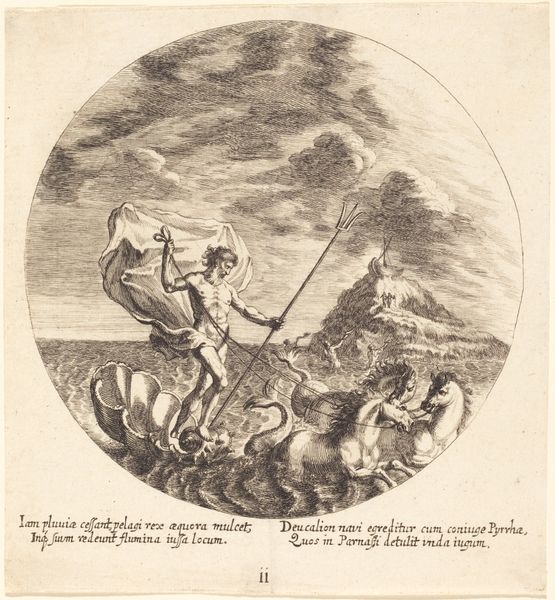
print, engraving
#
allegory
#
baroque
# print
#
landscape
#
figuration
#
history-painting
#
engraving
Dimensions: plate: 14.8 x 14.2 cm (5 13/16 x 5 9/16 in.) sheet: 15.2 x 14.5 cm (6 x 5 11/16 in.)
Copyright: National Gallery of Art: CC0 1.0
Georg Andreas Wolfgang the Elder created this etching, Mercury Killing Argus, sometime in the 17th or 18th century. The scene illustrates a story from Ovid’s Metamorphoses, one of the most influential books for artists in Europe at the time. The god Mercury has been sent to slay Argus, a giant with a hundred eyes, who was charged by Juno with guarding Io, a lover of Jupiter. Here, we see Mercury, winged helmet and sword in hand, standing over the slain Argus and holding his severed head. In the background, Io has been transformed into a cow. The image testifies to the enduring influence of classical mythology, and the high cultural status that such subjects enjoyed. The visual codes of classical dress and idealized bodies would have been instantly recognizable to educated viewers, signaling the importance of the scene. To fully understand the image we might look into illustrated editions of Ovid, and the importance of classical learning within the artistic academies of the period. We might ask, what kind of patron would have commissioned such a print? What does it tell us about their education and social standing?
Comments
No comments
Be the first to comment and join the conversation on the ultimate creative platform.
